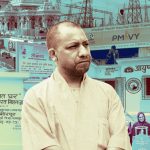The Rural Fetish
Throwing money at rural India without redistributing its excess population is worthless populism
 Siddharth Singh
Siddharth Singh
 Siddharth Singh
Siddharth Singh
 |
12 Jul, 2019
|
12 Jul, 2019
/wp-content/uploads/2019/07/Ruralfetish1.jpg)
THAT BUDGETS have ceased to be events worth watching is now a cliché. With the major part of economic action in the private sector, Union Budgets are not the acts of policy they used to be, say, in the 1970s or even the ’80s. They, however, retain some value as barometers of the policy direction a government is likely to take. The first Budget of the second Narendra Modi Government was a much anticipated document. The expectation from entrepreneurs, economists and ordinary citizens alike was that some sort of reform road map would be forthcoming in 2019 after five years of waiting. In the event, the Budget decided to tread along familiar lines.
One thing that stood out in the annual financial statement was its pronounced bias in favour of rural India—a weak economic area that has proved stubborn to any reviving medicine. There are many ways to examine expenditures in the Budget but count them any way and the spending on rural India stands out in sharp relief. Consider just three main spending items: fertiliser subsidy, food subsidy and spending under the Mahatma Gandhi National Rural Employment Guarantee Act (MGNREGA). They total to a tidy Rs 3.24 lakh crore. Another way to look at this kind of spending is to examine the spending of the Ministry of Agriculture and Farmers’ Welfare. Its budget has gone up by a whopping 92 per cent over the last year to Rs 1.3 lakh crore. Of this sum, Rs 75,000 crore is budgeted for the PM-Kisan scheme that dishes out Rs 6,000 to each farmer every year. If one adds the spending for the Ministry of Rural Development— which has a budget of Rs 1.17 lakh crore this year—rural India is the clear winner as far as money allocations go.
The numbers have been analysed threadbare in the week since the Budget. What are not obvious are the reasons behind the change of course in favour of rural India.
The picture that emerges is clearly of a return to rural spending with gusto, reminiscent of the period from 2006— when the National Rural Employment Guarantee Scheme was launched—until 2013, the year before Narendra Modi won his spectacular victory in the Lok Sabha elections. One reason for that huge win was the anger and dismay of urban voters against the rural bias in economic policymaking. Apart from the global economic crisis that emerged in 2008, the large and unsustainable spending of those years, mostly in rural India, was responsible for initiating the chain reaction of events that finally led to the infamous policy paralysis of that time.
The question in many minds after the Union Budget last week now is: Are we returning to the same path? While it is too early to say anything specific, the causes for the ‘rural turn’ can certainly be explored. Four answers come to mind, varying from the short-term electoral reasons all the way to the historical aspect of rural dominance in Indian policymaking.
First on the list is that this is an ameliorative exercise to take care of rural neglect. In 2018-2019, gross value added (GVA) in agriculture stood at 2.9 per cent, nearly half of the 5 per cent witnessed in 2017-2018. This shocking decline in agricultural output came on the back of the shock from demonetisation in 2016. While effects on the real economy seemed to have dissipated over time, it is clear that a large degree of dislocation was imparted to the sector, which is largely dependent on cash for most of its transactions. Fixing that required injecting a large dollop of cash, which is what the Budget has done.
This is the short-term perspective. The echo of policy mistakes made during the first Modi Government continues to reverberate during its second term. From this perspective, it is essential from a political point of view to keep rural distress in check.
There is, however, a second, slightly longer-term, reason for devoting a higher chunk of resources to rural India. Beyond elections and immediate distress lies the logic of India’s political economy as a system of spoils among the industrial, urban and rural sectors. This is the classic explanation given by an earlier generation of scholars like Ashok Mitra, Pranab Bardhan and others. Beginning in the late 1960s and continuing well into the 21st century, lobbying for higher crop prices by rich farmers and their political allies was considered a normal feature of India’s political landscape. In the months before the Commission for Agricultural Crops and Prices (CACP) would take a call on minimum support prices (MSPs), there would be hectic consultations between state and Central leaders for the ‘right’ price to be settled. The only reason for holding back would be the difficult fiscal situation of the Union Government that had to bear these expenses. Given that crops like wheat and rice had an assured purchasing system in many parts of the country under which whatever produce entered the market was bought, this was a costly arrangement. At times, even minimal increases in MSPs led to an outgo of thousands of crores every year.
In the last five years, all this changed and virtually came to an end. There are regular increases in MSPs but crop prices have collapsed. From 2014 to 2018, the consumer food price index witnessed a decline from 7.02 per cent to 1.31 per cent even as the food articles part of the Wholesale Price Index (WPI) underwent a similar collapse from 6.31 per cent to -0.23 per cent. This historic deflation in food prices meant that earnings, incomes and wages in rural India were badly dented. To be fair, the reasons for this free fall were complex and a mix of global decline in commodity prices—something that affected the export prospects of rural India— to the refurbished inflation management system adopted by the Reserve Bank of India (RBI).
A party that believes in a very different kind of politics is now being forced to give whatever farmers want without a whimper of protest from rural India. If the 1980s and 1990s accomplished that with chaos, the 21st century is witnessing that with silence
The days when farm leaders demanded higher prices and the Union Government complied in a jiffy are a distant memory now. One reason for the ability of farmers to demand and get what they wanted was the strength of non-political kisan leaders like Sharad Joshi in Maharashtra, Mahendra Singh Tikait in Uttar Pradesh and the assorted kisan unions in Haryana, Punjab and other states. By the early 2000s, all of this was passé as the leaders died and that form of doing farm politics died as well. By 2014, all of this was totally irrelevant.
That, however, does not mean that farmers have lost all traction. The problem for the Modi Government is that if it ignores the prevailing system of spoils, it stands to suffer badly at the polls. The defeats in Madhya Pradesh, Chhattisgarh and Rajasthan were in no small measure due to rural disaffection. The narrow margins of those losses showed that identity politics of the kind practiced by the BJP had managed to contain the damage. The problem for the BJP, however, is that the past can’t be erased just like that. The fact that there are no farm leaders to channel and get farmers’ demands for higher prices does not mean that the demand has disappeared: what has gone is the supply side. It says something about India’s democracy that a party that believes in a very different kind of politics is now being forced to give whatever farmers want without a whimper of protest from rural India. If the 1980s and 1990s accomplished that with plenty of noise and chaos, the 21st century is witnessing that with silence. The cost to the Indian economy, however, is very high, as it was in the earlier decades.
Finally, there is a third perspective, one that has haunted every Indian leader since Independence. One can imagine Jawaharlal Nehru in 1951 thinking the grounds on which he should seek votes from Indians for the coming parliamentary elections in 1951-1952. He could evade that question: he was loved by the Indian masses and the rational calculation about getting something in return for one’s vote did not arise during his term as Prime Minister. But after that no head of government has escaped answering that. The solutions have varied. But by and large, they have veered around the two axes of identity politics and enhanced spending on rural areas in a bid to shore up the income in the hands of those living there. The latter made sense for a very long time as the majority of Indians lived in rural areas. For example, in different phases of her time as Prime Minister, Indira Gandhi relied on these strategies. In 1971, garibi hatao was more or less about enhanced spending on India. By 1980, she had switched to the axis of identity politics.
HISTORICALLY, THE TWO have remained distinct poles of doing politics even if successive prime ministers have taken care to continue dispatching money to villages and towns that dot the rural landscape. In the muddled 1990s, for example, the Governments at the Centre were based on parties with a strong rural base and eschewed identity politics. This continued roughly until 2010 when the rural strategy began to backfire. Since 2014, identity politics has worked spectacularly for the BJP giving it a majority that eluded it for a very long time. The plan to simply wish away the rural pole by closely integrating it with urban India worked well until a point. Jan Dhan accounts, ironing out malfunctions in rural markets and other steps worked well up to a point. But then came the global collapse of commodity prices and with that those dormant features of India’s political economy returned with a vengeance, albeit in a different form. There were no farm leaders but there was farmers’ politics. Even Prime Minister Modi could not ignore that.
Each of these perspectives varies from the short to the long rhythms of independent India’s history. It is pessimistic to note the country cannot escape the structural trap it landed in the 1960s. Then it was continued agitation for better terms of trade for farm output against industrial goods; now it has turned into outright transfer of money for consumption. Even the pretence of production has been given up. It is a sobering thought that Prime Minister Narendra Modi, the most powerful head of government in recent memory, has to heed these basic parameters of Indian economy. It is another matter that everyone knows he’s a moderniser and has tried to alter the struts that hold it back.
There is a final perspective that casts a somewhat positive light on the Budget story. In recent times, economist Rathin Roy has warned that India is walking into a “middle-income trap”. Since 1970, many developing countries have grown fast and have seen their incomes rise. But few have managed to transform themselves into high-income countries. Their output grows to a point and after that stagnates. That, in sum, represents the middle- income trap. In Roy’s reasoning much of India’s growth has come from goods demanded by the top 100 million people in India. These include automobiles, air-conditioners, refrigerators, etcetera. The goods that the remaining 1.2 billion people want—nutritious food, affordable housing, education and healthcare—do not feature in what is produced in the Indian economy. Probably this has a lot to do with extremely low purchasing power in the hands of these 1.2 billion people. But the effects will be visible very soon: growth is likely to taper off as the markets for what the top 100 million demands get saturated.
From that perspective, what Modi is doing makes sense. The plan to build houses for everyone, Ayushman Bharat healthcare scheme and doubling of farmers’ income by 2022 have the potential to deepen growth and take it, say, to the next 500 million people. Viewed from that angle, there may be some logic to increased rural spending. The trouble is the way these ideas are being funded and the interim period for which money will have to be sought to keep on pushing them. The danger that India will get into some kind of macro-economic funk is very real. Economic growth is sclerotic now even as the tax shortfall goes skyward. To pretend otherwise will be folly. It is safe to lay some of the blame on the pronounced swing in favour of rural India.

/wp-content/uploads/2025/01/Cover_Kumbh.jpg)










More Columns
Pixxel launches India’s first private commercial satellite constellation V Shoba
What does the launch of a new political party with radical background mean for Punjab? Rahul Pandita
5 Proven Tips To Manage Pre-Diabetes Naturally Dr. Kriti Soni